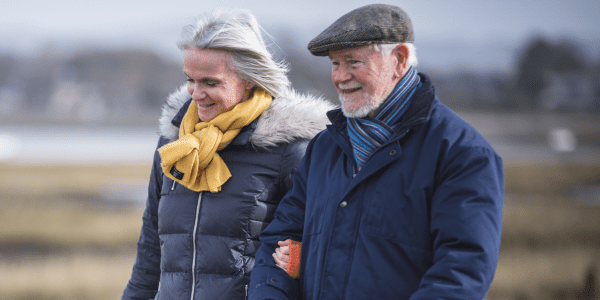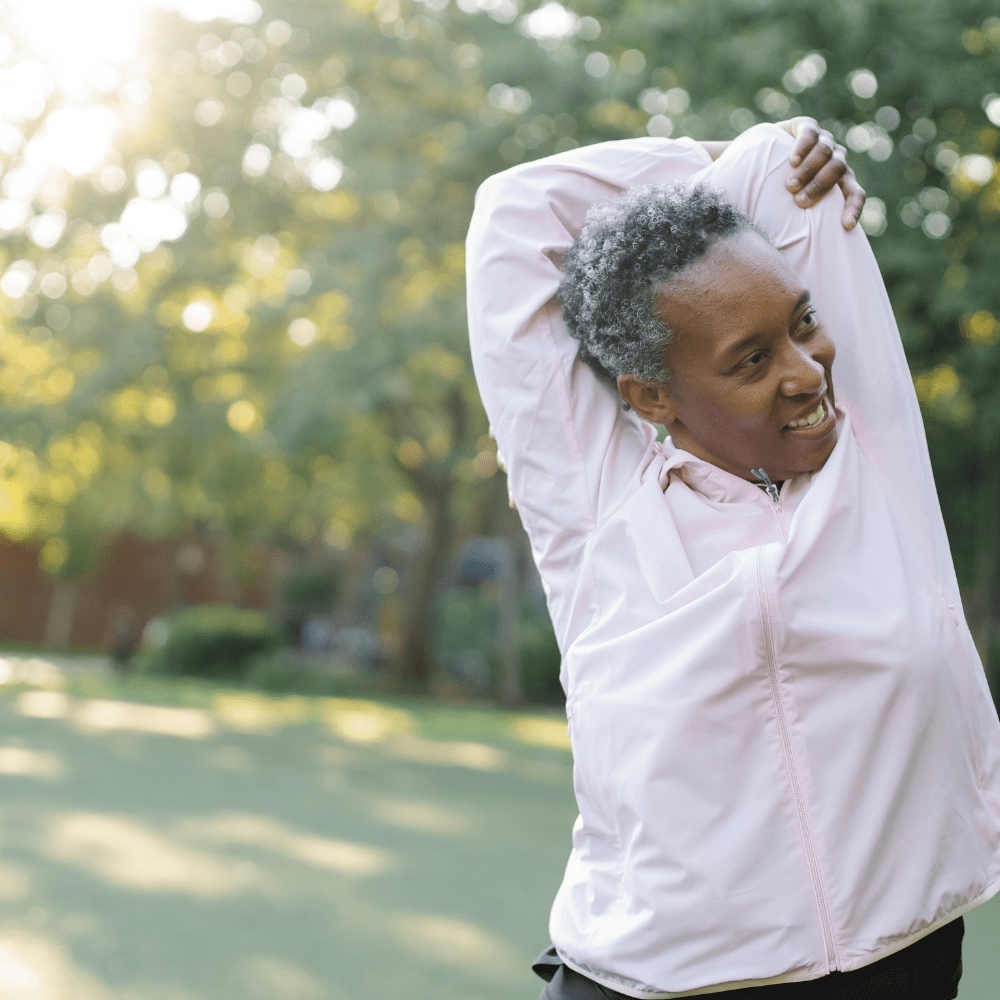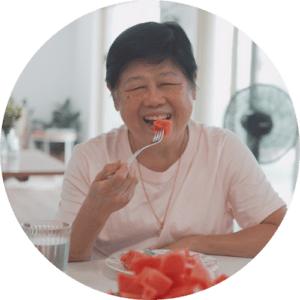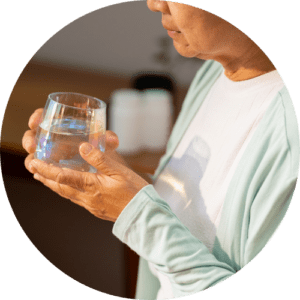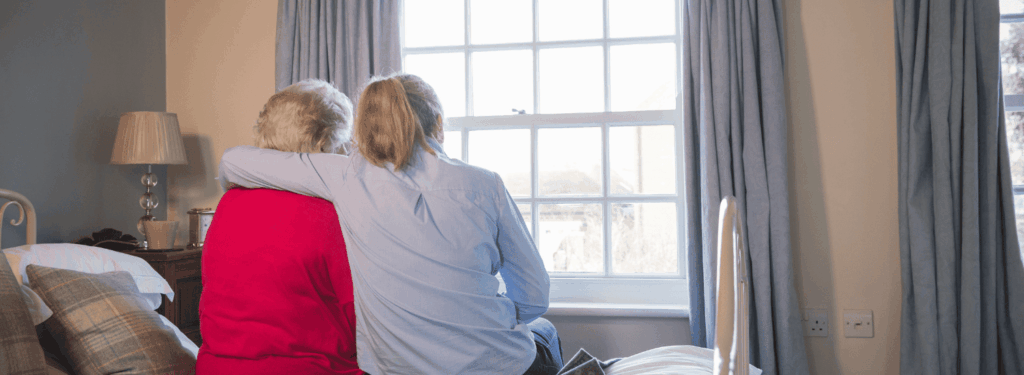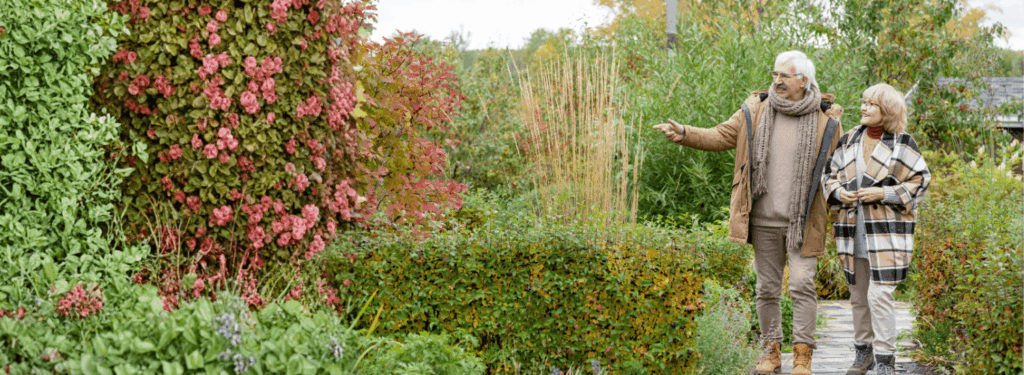5 low-intensity activities to keep loved ones fit and well this summer
44% of adults aged 75 to 84 are not currently physically active, according to research conducted by the UK Government.
As we get older, it’s natural to want to slow down and start participating in less physical activity. Whether you’re living with an illness, injury, or general mobility challenges, staying physically active can be tricky — especially during the summertime, when symptoms can be exacerbated by the heat.
But exercise doesn’t have to include strenuous activities like brisk walking or running. Instead, simple, low-intensity activities can make all the difference.
In this blog, we’ll take a look at some examples of low-intensity activities that can keep your loved ones active this summer.
Different kinds of activity: low, medium and high-intensity
Before we get into the examples of low-intensity activity during the summertime, let’s take a quick look at the different types of activity outlined by the NHS.
Low-intensity: low-intensity activity counts as any movement that isn’t sitting or lying down. This can include getting up to make a cup of tea, walking at a slow pace, making the bed, and standing up.
Medium intensity: moderate intensity activity will increase your heart rate slightly, and make you breathe a little faster. This can include water aerobics, riding a bike, pushing a lawnmower, or hiking.
High intensity: also known as vigorous activity, high intensity activity will make you breathe harder and faster. This will include things like running, swimming, football, or dancing.
Low-intensity activities for older people
With low-intensity activities in mind, here are some simple ways your
loved one can stay active this summer.
1. Make some cooling treats
Preparing food may not sound like exercise, but assembling a homemade ice lolly, or blending a fruit smoothie can promote slow, gentle movements that keep the mind and body active.
Even simple actions like reaching for ingredients, chopping soft fruits, stirring, and pouring all contribute to light activity, and can offer a great way to engage fine motor skills.
2. Attend outdoor social groups
Another great way to take part in low-intensity activity is to find out whether your local community arranges any small outdoor get-togethers. Whether that’s a craft afternoon with a local community centre, or a walking group in a nearby park, simply getting outdoors to talk to new and familiar faces can be incredibly beneficial for older people.
The great thing about this kind of activity is not just the physical movement, but also the mental stimulation and social connection they provide. And being outdoors in the fresh air and sunshine (safely, of course, with sun protection) can boost mood and overall well-being.
Here’s a tip: look for groups specifically advertised as low-impact or for those with limited mobility.
3. Get involved with gardening
Gardening is a fantastic way to get some light physical activity, while enjoying a hobby. Even if more moderate intensity activities like digging aren’t possible in the summer, there are plenty of other, gentle tasks that can be done.
That could include potting up plants while seated, weeding a raised bed, watering plants with a lightweight can, or pruning flowers. The bending, stretching, and reaching involved in these tasks provide excellent low-intensity exercise for joints and muscles.
4. Feed the birds
Feeding the birds is a simple activity that offers gentle movement, while also providing a calming sensory experience.
Tasks like refilling bird feeders, topping up a bird bath, or scattering seeds can all encourage small walks to the garden or window. And it can provide older people with a sense of purpose and routine, all while watching local wildlife.
5. Visit the beach and other local landmarks
Exploring local landmarks or taking a trip to the beach can be a great way to combine physical activity with mental stimulation. A slow walk, collecting seashells, or simply standing and enjoying the sounds of the sea are all low-intensity activities that offer benefits for older people.
Visiting a local museum, art gallery, or historical site involves gentle walking, standing, and taking in new information. These kinds of outings provide a change of scenery, opportunities for social interaction, and a sense of adventure, while promoting gentle movement and cognitive engagement.
Considerations when staying active during the summer
When taking part in physical activity during the summer, it’s important to check in with older adults to ensure they stay safe and healthy. Our loved ones will be more vulnerable during the summer months, especially when it comes to dehydration and heatstroke. So, it’s key to stay hydrated, keep up to date with sunscreen applications, and make sure to take regular breaks to keep cool.
If you want to learn more about staying safe in the heat this summer, take a look at our blog on the subject, with expert advice from our Clinical Lead, Sabah Shah.
Stay active this summer
When it comes to staying active in the summer, exercise doesn’t have to be challenging. Instead, maintaining simple movements with low-intensity activities can make a big difference to older people.
If you’re looking into care options this summer, take a look at our home care and live-in care options. Or, you can always give us a call at 0203 936 1798.
Discover more
Helping families in Scotland recognise the early signs of dementia
The NHS is encouraging families to be alert to subtle early signs of dementia, particularly during times when loved ones spend more time together. Increased awareness can help ensure people receive the right support and assessment as early as possible....
Read moreLook out for the subtle signs of dementia
The NHS has recently urged people across the UK to be mindful of subtle warning signs of dementia in loved ones – especially during family gatherings over the festive season. Early awareness and prompt action can make a meaningful difference...
Read moreWorld Stroke Day 2025: recovering well at home
Every five minutes, someone in the UK will experience a stroke. For those living with the effects of a stroke, recovery can feel like a slow and daunting process. Yet with the right support, we’ve seen many people go on...
Read moreRead why our clients choose us
Awards & accreditations
Talk to us about your care needs
To talk about your care needs, contact one of our friendly advisors.
Calls from landlines are free.

